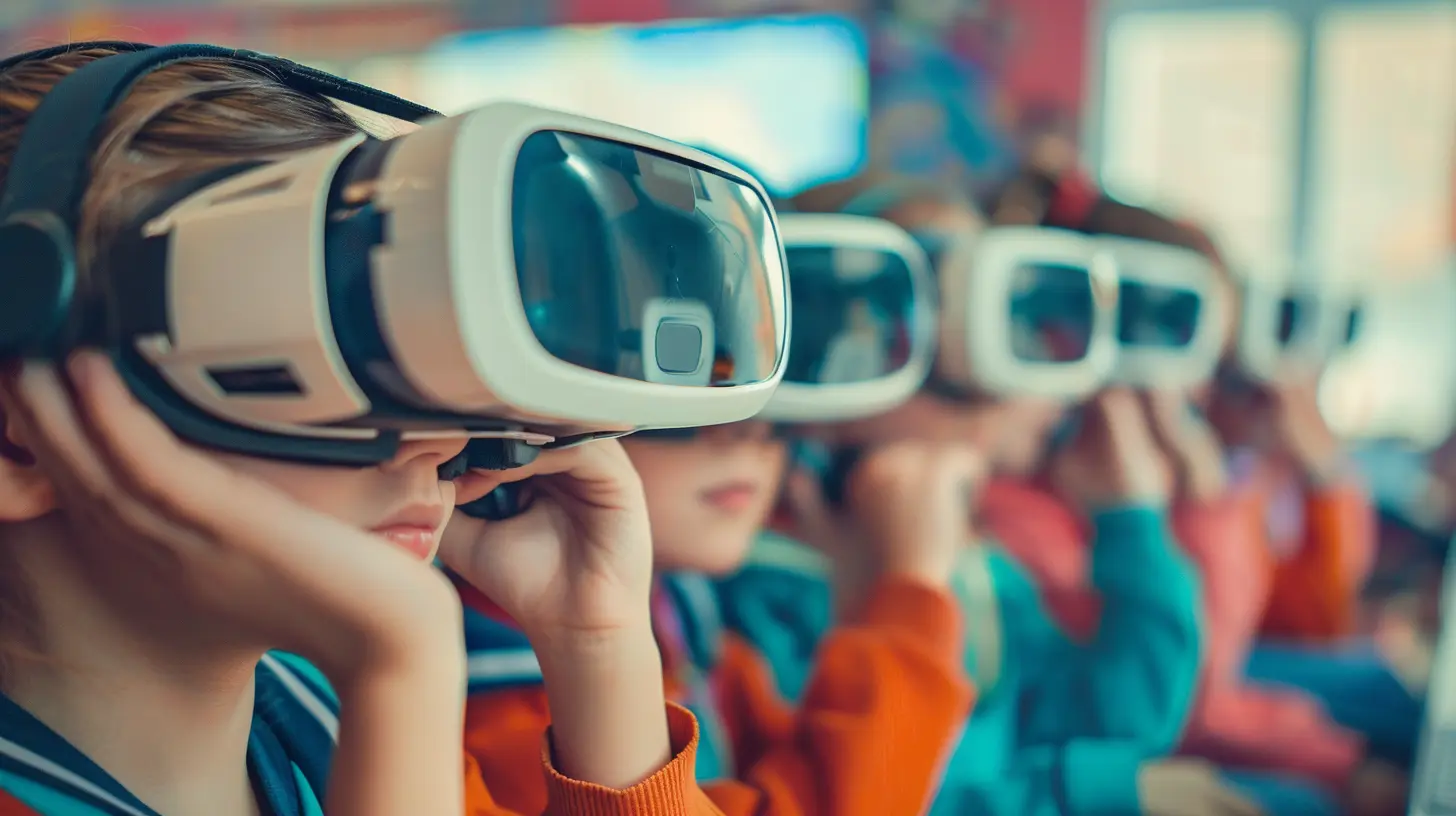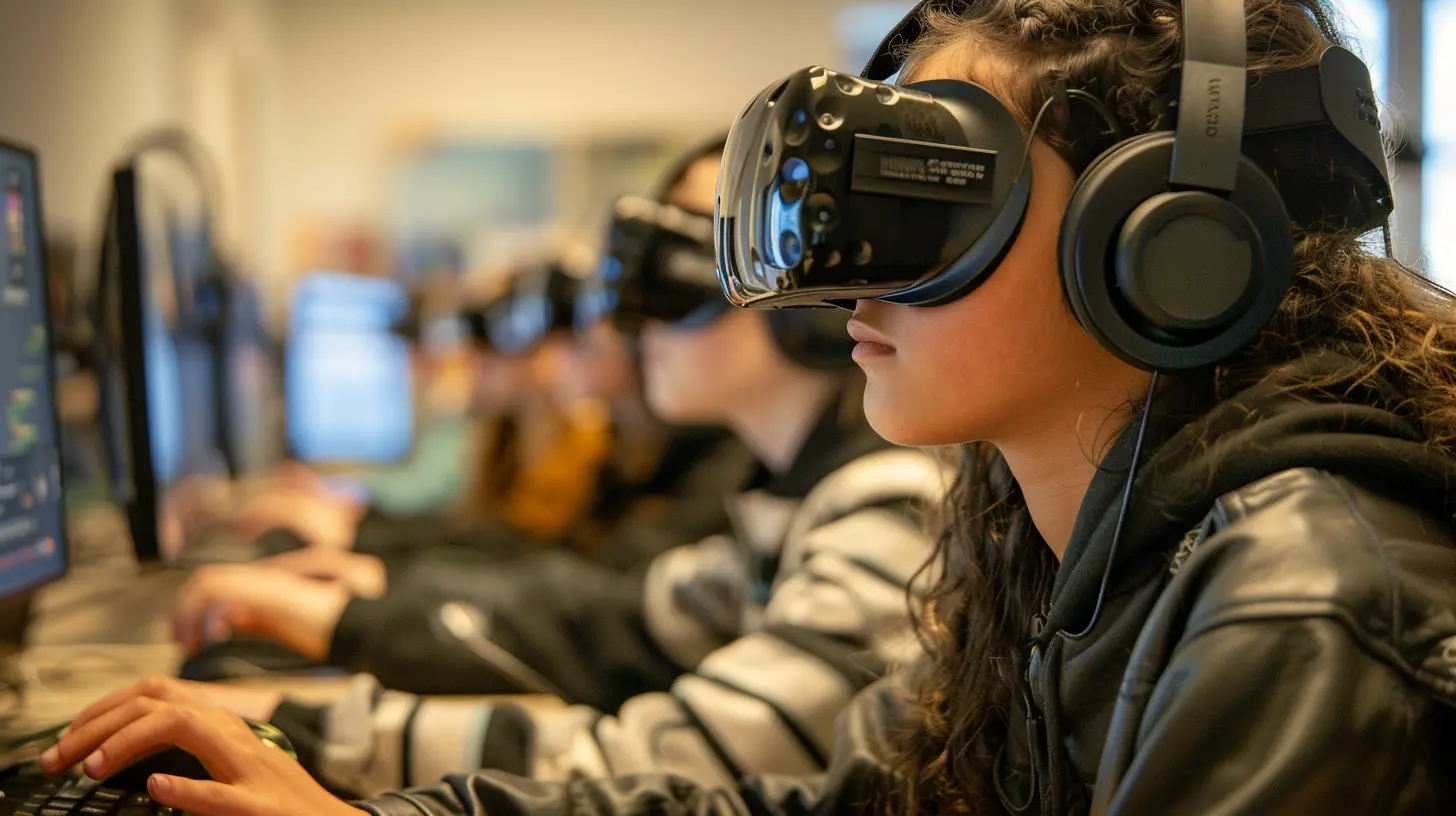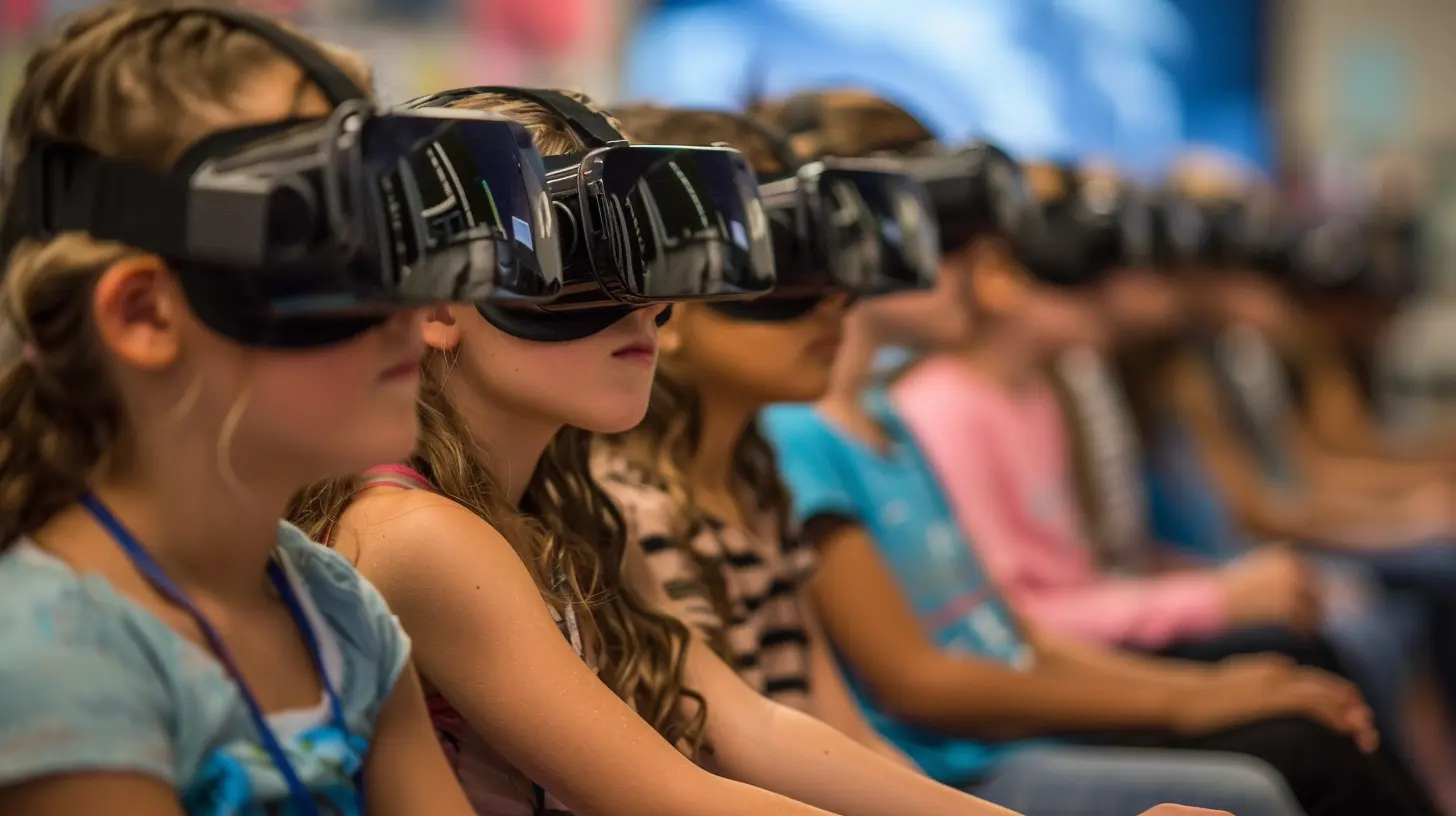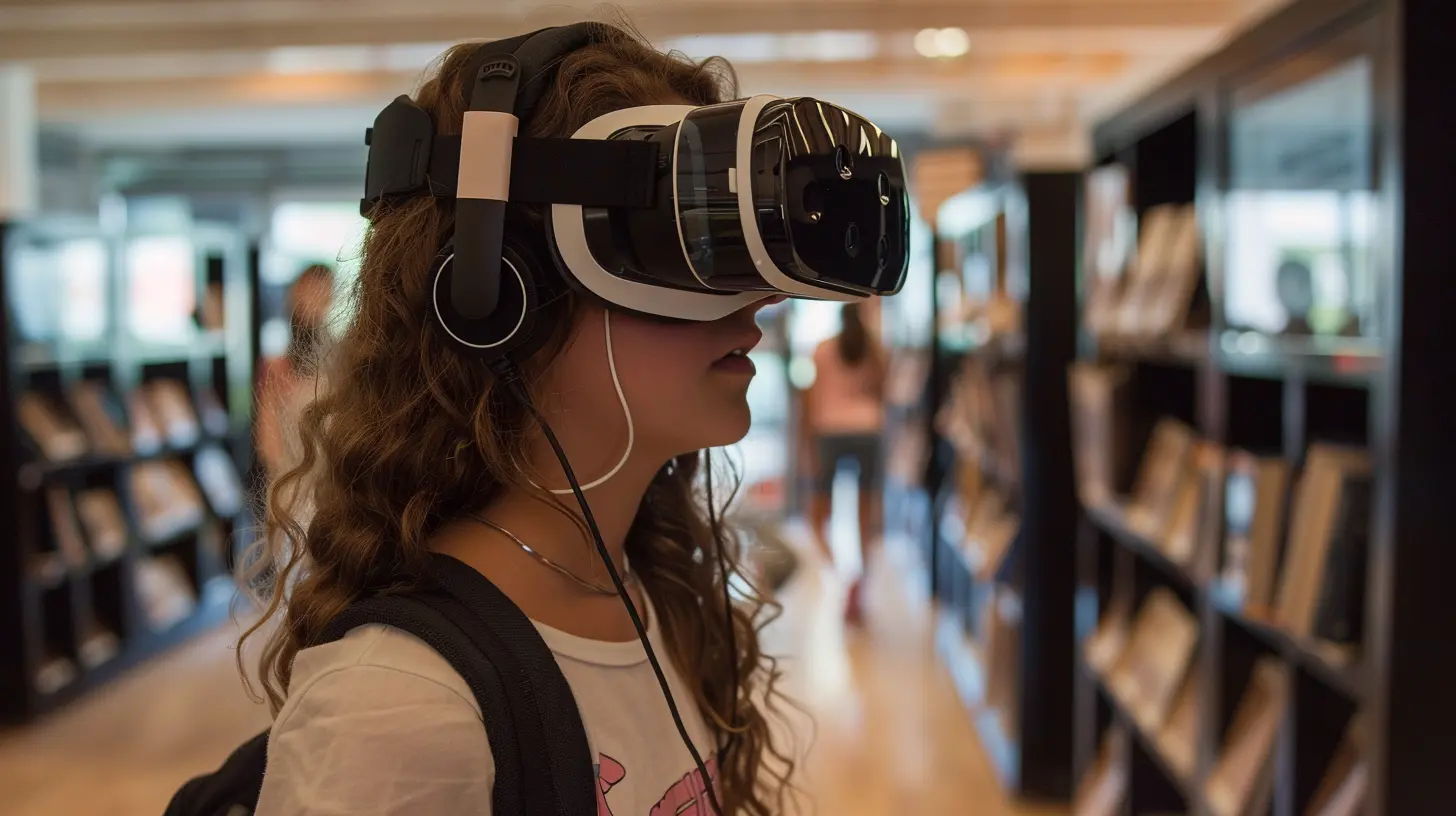6 September 2025
Learning how to code is like learning a new language—it requires practice, patience, and a lot of trial and error. But what if I told you that coding, traditionally seen as a screen-bound, sometimes tedious activity, is now being transformed into an immersive, hands-on experience, thanks to Virtual Reality (VR)? Yes, you heard that right. Virtual Reality is not just for gaming anymore. It’s making waves in education, specifically in the way students learn to code.
In this article, we’ll dive deep into how VR is revolutionizing coding education, making it more engaging, interactive, and fun. We’ll explore how it works, its benefits, and why it just might be the future of coding education.

What Exactly Is Virtual Reality (VR)?
Before we get into how VR is changing the coding landscape, let’s quickly define what VR is. Virtual Reality is a simulated experience that can be very similar to or completely different from the real world. It uses technology—typically headsets and motion controllers—to create a 3D environment where users can interact with the virtual space around them.In VR, you’re not just passively observing things; you’re actively participating. Whether it’s walking through a virtual landscape or manipulating objects, VR immerses you in a digital world. And that’s what makes it such a powerful educational tool.

The Traditional Way of Learning to Code: What’s the Problem?
Let’s face it—learning to code can be tough. For many students, the traditional method involves hours of staring at a screen, typing lines of code, and debugging errors. While coding itself is a creative and logical activity, the process of learning can sometimes be monotonous and abstract.- Lack of engagement: Sitting down and writing code can feel like a chore, especially for beginners who might not fully grasp what they’re creating.
- Abstract concepts: Concepts like loops, functions, and algorithms can be hard to visualize. Many students struggle to understand how their code translates into real-world applications.
- Limited collaboration: Coding is often done in isolation. Sure, group projects exist, but the immediate feedback and collaboration that could make the learning process smoother are usually missing.
So, how can Virtual Reality change this? Let’s explore.

How VR Is Revolutionizing Coding Education
1. Immersive Learning Environment
Imagine this: Instead of staring at a flat screen, you’re inside a 3D environment where you can visualize the code you’re writing in real-time. VR allows students to step into a virtual world where they can interact with their code in a way that feels tangible.For example, if you’re coding a robot to move, you can actually see the robot move in the virtual space. You’re no longer imagining what your code does—you’re experiencing it firsthand. This level of immersion transforms abstract concepts into concrete experiences, making coding more intuitive and less daunting.
2. Enhanced Visualization of Complex Concepts
One of the biggest challenges in learning to code is understanding abstract concepts like algorithms, data structures, or object-oriented programming. These topics can feel overwhelming when explained through text or simple diagrams.VR breaks down these barriers by allowing students to visualize these concepts in a 3D space. Think of it like "seeing" an algorithm come to life. Instead of just reading about how a sorting algorithm works, VR can show you step-by-step how data moves and gets organized.
When students can physically manipulate objects and see the results of their code in real-time, complex topics become easier to grasp. It’s like moving from black-and-white sketches to a full-color, animated film.
3. Hands-On Learning Without the Risks
In traditional coding education, errors can be frustrating. You write a few lines of code, hit "run," and if something’s wrong, you get an error message. Then it’s back to debugging. While this trial-and-error process is a valuable part of learning, it can quickly become discouraging.VR changes this by offering an environment where students can experiment freely without fear of breaking anything. Mistakes become learning opportunities rather than roadblocks. Want to see what happens when you loop infinitely? Do it in VR and watch the environment respond. This hands-on approach fosters curiosity and encourages students to explore different coding strategies.
4. Collaboration and Real-Time Feedback
Coding has often been a solitary activity, but VR introduces a collaborative element to the process. In a virtual environment, students can work together on coding projects, see each other’s code in real-time, and offer instant feedback.Imagine being in a virtual classroom where teachers and students are all working on the same coding project. You can see what your peers are doing, ask questions, and get help without having to leave the virtual environment. This makes learning more social and interactive, which can boost engagement and motivation.
5. Gamification of Coding
VR also opens the door to gamification—the process of turning learning into a game. Let’s be honest: coding can feel like a grind sometimes. But what if coding challenges were actually fun, like a video game?With VR, coding can be turned into a game where students solve puzzles, complete challenges, and earn rewards for writing code. Whether it’s moving virtual objects or controlling a character, gamification makes coding feel like a series of exciting challenges rather than a tedious task.
For example, a VR coding app could present students with a broken virtual machine that needs fixing. The only way to fix it? Write the correct code to get its parts moving again. This kind of immersive, gamified learning keeps students engaged and makes the process enjoyable.

Why VR Is the Future of Coding Education
1. Learning by Doing
VR offers a "learning by doing" approach, which is often more effective than traditional methods. In VR, students aren’t just passively absorbing information; they’re actively engaging with it. By physically interacting with code in a virtual environment, students are more likely to understand and retain what they’re learning.Studies show that students retain information better when they are actively involved in the learning process. VR makes coding interactive, which can lead to better comprehension and long-term retention of coding skills.
2. Customizable for Different Skill Levels
One of the great things about VR is its flexibility. It can be tailored to suit different skill levels, from beginner to advanced. For beginners, VR can offer guided tutorials, step-by-step instructions, and visual aids to help them understand the basics. For more advanced students, VR can present complex challenges that require creative problem-solving and advanced coding techniques.This level of customization ensures that every student is learning at their own pace, making VR an ideal tool for teaching coding in a way that’s both personalized and scalable.
3. Accessible and Inclusive
Another major advantage of VR is its potential for accessibility. Traditional coding education often requires access to physical resources like computers, software, and textbooks. VR can democratize access to coding education, making it available to students anywhere in the world.All you need is a VR headset and you can enter a coding classroom from the comfort of your own home. This could be especially beneficial for students in underserved communities who may not have access to the latest technology or coding resources.
4. Preparing Students for the Future
The world of work is changing, and coding is becoming a critical skill across many industries. By integrating VR into coding education, we’re not only making the learning process more engaging and effective, but we’re also preparing students for the future.As industries like gaming, healthcare, and even architecture increasingly rely on VR and AR (Augmented Reality) technologies, students who learn to code in a VR environment will be better equipped to enter these cutting-edge fields. Essentially, VR is helping to bridge the gap between education and the real-world applications of coding.
Examples of VR Coding Platforms
So, how can you get started with VR coding? Several platforms are already offering VR-based coding experiences:- CoSpaces Edu: This platform allows students to build and code their own virtual worlds using block-based coding or JavaScript.
- Unity with VR: Unity is a popular game development engine, and it offers VR learning modules for students who want to code and create their own virtual environments.
- VRTK (Virtual Reality Toolkit): VRTK is an open-source toolkit that makes it easier for developers to create VR experiences. Students can use it to learn how to code for virtual environments.
Final Thoughts
Virtual Reality is not just a futuristic technology for gaming—it's a transformative tool that’s reshaping the way students learn to code. From immersive learning environments to gamification and real-time collaboration, VR is making coding education more engaging, interactive, and accessible than ever before.If you’re a student or educator looking to make coding fun again, VR might just be the answer. It’s time to step into the virtual world and see how this technology can change the way we approach coding education.








Ziva Porter
This article presents a compelling perspective on the transformative role of virtual reality in coding education. It's fascinating to see how immersive technologies can enhance engagement and understanding. I look forward to seeing further developments in this innovative approach to learning.
November 30, 2025 at 8:13 PM